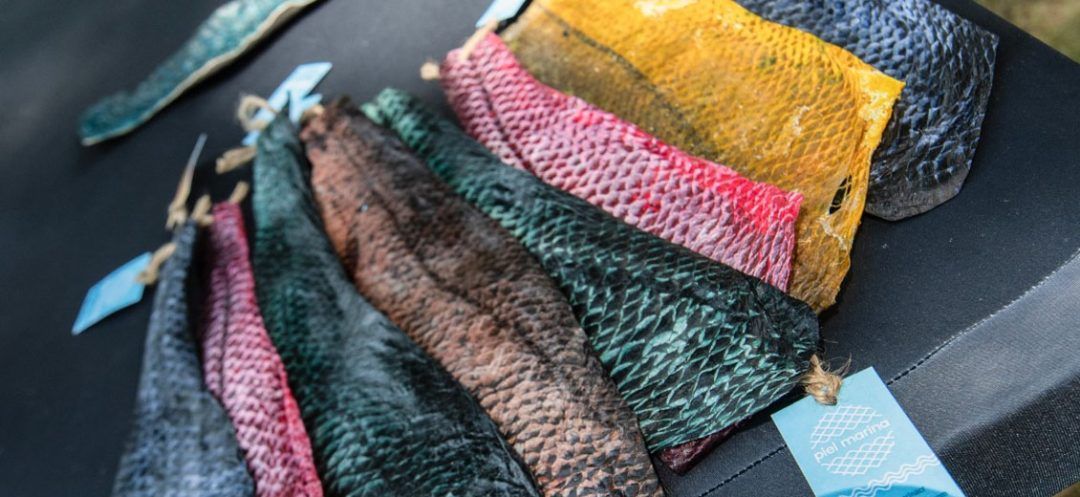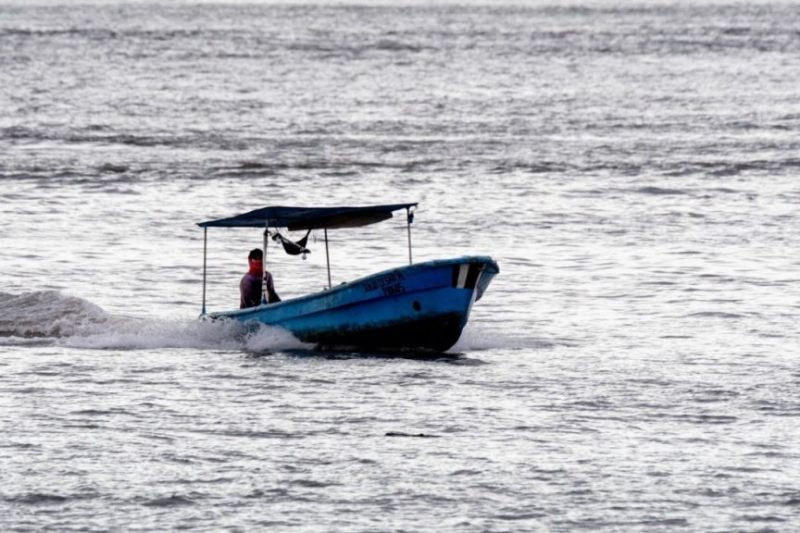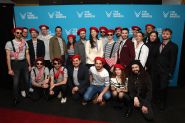
©Photo Credit: Ezequiel Becerra / AFP
In Costa Rica, a pioneering project by a women-led cooperative is transforming discarded fish skins into high-quality leather for clothing and jewelry, potentially revolutionizing sustainable fashion.
On a beach in Costa Rica, two women meticulously clean fish skins that will later be crafted into clothing and jewelry, perhaps eventually gracing the fashion runways of major designers. Marta Sosa and Mauren Castro embarked on this venture two years ago in Costa de los Pajaros, a village about a hundred kilometers from the capital, San José, aiming to secure an income for their families.
"This skin would have been thrown into the sea and now it will no longer pollute but will be used to make leather," Mauren Castro, 41, told AFP. She hopes it will be used to make jewelry, clothing, and potentially also bags and shoes in the future. A total of fifteen women have joined the Piel Marina cooperative, which spearheads the initiative with support from the NGO MarViva, providing training and funding.
Sitting at a table set up by the seaside, the two women scale skins from sea bass and wolf fish as fishermen deliver their catch of the day. According to the UN, the fashion industry accounts for 2 to 8% of global greenhouse gas emissions and 9% of the microplastics in the sea. The cooperative's women craft the jewelry themselves, while textile factories in the Puntarenas region, the country's main port on the Pacific, manufacture the clothing using tanned leather. "It's about giving an additional use to what is considered waste in another production chain," Sofia Ureña, a designer and biomaterials researcher, explained to AFP. "The most sustainable garment is the one that already exists and does not require new resources," she emphasized.
 Photo Credit: Ezequiel Becerra / AFP
Photo Credit: Ezequiel Becerra / AFP
Artisanal fishing is one of the economic drivers of the region, though the activity is in decline. The cooperative represents an opportunity for "female empowerment" in an area where women traditionally remain within the home, Mauren Castro noted. It also provides a source of income in a region where one in three adults is unemployed and 14% of the population lives in poverty, according to official data.
"At first, we didn't believe in this challenge, because we thought: how can a smelly, polluting skin become a raw material that allows women to thrive?" recalls Mauren Castro, formerly a housewife like Marta Sosa. "We first clean the fabric, then wash it with soap as if we were washing clothes," explained Mrs. Sosa. "We dye it with glycerin, alcohol, and natural dye, then let it dry," added the seventy-year-old. The leather is ready after eight days (four for dyeing and four more for sun drying). It is flexible, elastic, durable, waterproof, and does not smell like fish. As the cooperative's activities strengthen, the members now dream of selling their leather abroad. "I would like it to be seen in Hollywood, Canada, on the great runways of Paris, where the great designers are," said Mrs. Castro excitedly.
This hope may well become a reality. Global fashion trends are shifting towards environmentally respectful production, and recycled and natural materials are increasingly favored on international runways, according to UN studies.
With AFP
On a beach in Costa Rica, two women meticulously clean fish skins that will later be crafted into clothing and jewelry, perhaps eventually gracing the fashion runways of major designers. Marta Sosa and Mauren Castro embarked on this venture two years ago in Costa de los Pajaros, a village about a hundred kilometers from the capital, San José, aiming to secure an income for their families.
"This skin would have been thrown into the sea and now it will no longer pollute but will be used to make leather," Mauren Castro, 41, told AFP. She hopes it will be used to make jewelry, clothing, and potentially also bags and shoes in the future. A total of fifteen women have joined the Piel Marina cooperative, which spearheads the initiative with support from the NGO MarViva, providing training and funding.
Sitting at a table set up by the seaside, the two women scale skins from sea bass and wolf fish as fishermen deliver their catch of the day. According to the UN, the fashion industry accounts for 2 to 8% of global greenhouse gas emissions and 9% of the microplastics in the sea. The cooperative's women craft the jewelry themselves, while textile factories in the Puntarenas region, the country's main port on the Pacific, manufacture the clothing using tanned leather. "It's about giving an additional use to what is considered waste in another production chain," Sofia Ureña, a designer and biomaterials researcher, explained to AFP. "The most sustainable garment is the one that already exists and does not require new resources," she emphasized.
 Photo Credit: Ezequiel Becerra / AFP
Photo Credit: Ezequiel Becerra / AFPArtisanal fishing is one of the economic drivers of the region, though the activity is in decline. The cooperative represents an opportunity for "female empowerment" in an area where women traditionally remain within the home, Mauren Castro noted. It also provides a source of income in a region where one in three adults is unemployed and 14% of the population lives in poverty, according to official data.
"At first, we didn't believe in this challenge, because we thought: how can a smelly, polluting skin become a raw material that allows women to thrive?" recalls Mauren Castro, formerly a housewife like Marta Sosa. "We first clean the fabric, then wash it with soap as if we were washing clothes," explained Mrs. Sosa. "We dye it with glycerin, alcohol, and natural dye, then let it dry," added the seventy-year-old. The leather is ready after eight days (four for dyeing and four more for sun drying). It is flexible, elastic, durable, waterproof, and does not smell like fish. As the cooperative's activities strengthen, the members now dream of selling their leather abroad. "I would like it to be seen in Hollywood, Canada, on the great runways of Paris, where the great designers are," said Mrs. Castro excitedly.
This hope may well become a reality. Global fashion trends are shifting towards environmentally respectful production, and recycled and natural materials are increasingly favored on international runways, according to UN studies.
With AFP
Read more



Comments